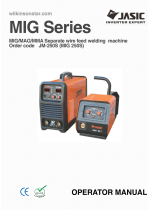
TABLE OF CONTENTS
0460 896 487 © ESAB AB 2016
1 SAFETY ................................................................................................................ 6
2 INTRODUCTION................................................................................................... 8
2.1 Control panel Aristo U82 .....................................................................................8
2.1.1 Keys and knobs.................................................................................................. 8
2.2 Location ................................................................................................................ 9
2.3 USB connection ...................................................................................................9
2.3.1 Insert the USB memory....................................................................................10
2.4 First step – choose the language .....................................................................10
2.5 Display ................................................................................................................ 11
2.5.1 Symbols in the display ..................................................................................... 12
2.5.2 Icon for VRD and Fault indication .................................................................... 13
2.6 General information about settings .................................................................13
2.6.1 Setting of numerical values .............................................................................. 13
2.6.2 Setting with given alternatives.......................................................................... 14
2.6.3 Settings ON/OFF.............................................................................................. 14
2.6.4 QUIT and ENTER ............................................................................................14
3 MENUS ............................................................................................................... 15
3.1 Main menu ..........................................................................................................15
3.1.1 Configuration menu..........................................................................................16
3.1.2 Tools menu.......................................................................................................16
3.1.3 Weld Data Setting menu ..................................................................................17
3.1.4 Measure ...........................................................................................................18
3.1.5 Weld data memory menu ................................................................................. 19
3.1.6 Fast mode menu ..............................................................................................19
4 MIG/MAG WELDING .......................................................................................... 20
4.1 Settings in the Weld Data Setting menu ..........................................................20
4.1.1 MIG/MAG welding with short-/sprayarc............................................................ 20
4.1.2 MIG/MAG welding with pulsing ........................................................................21
4.1.3 MIG/MAG welding with SuperPulse, primary/secondary,
short-/sprayarc/pulsing .................................................................................22
4.2 Function explanations for settings ..................................................................24
4.2.1 QSet ................................................................................................................. 29
4.2.2 Synergy group..................................................................................................29
4.3 SuperPulse .........................................................................................................30
4.3.1 Wire and gas combinations..............................................................................31
4.3.2 Different pulsing methods ................................................................................ 31
4.3.3 Wire feed unit ................................................................................................... 31
5 MMA WELDING.................................................................................................. 34
5.1 MMA welding DC ................................................................................................34
5.2 MMA welding AC ................................................................................................34
5.3 Function explanations for settings ..................................................................35





















